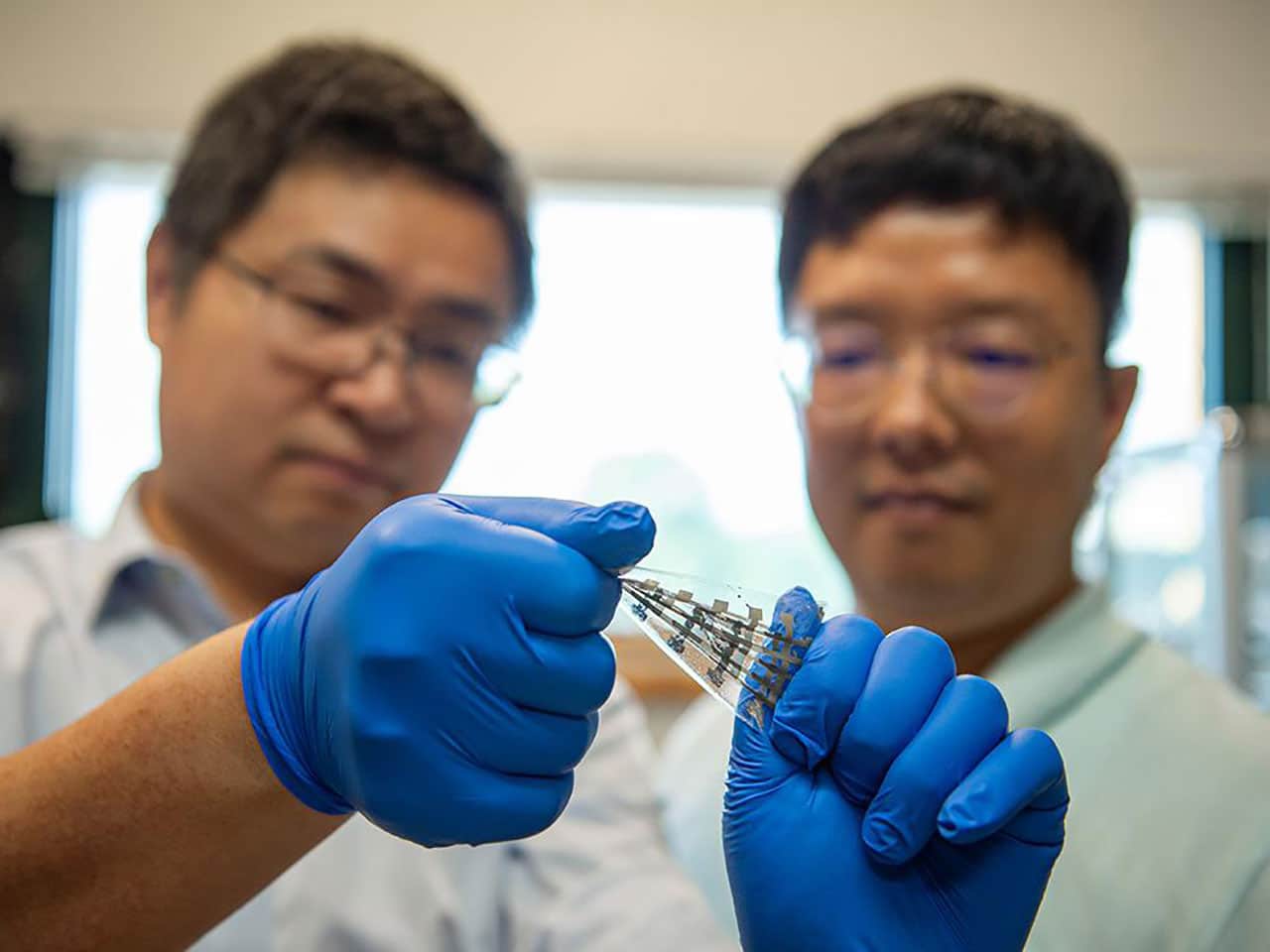
Robotics and wearable devices might soon get a little smarter. Penn State engineers have developed a stretchy, wearable synaptic transistor that works like neurons in the brain to send signals to some cells and inhibit others in order to enhance and weaken the devices’ memories.
Artificial synaptic transistors that exhibit similar excitatory and inhibitory behavior to the brain could provide diverse functionality and efficient computing in various applications. However, some of these applications, such as soft robotics and wearable electronics, require synaptic devices that are mechanically soft and deformable.
The team has designed the artificial synaptic transistor to be integrated into robots or wearables and use artificial intelligence to optimize functions. The synaptic transistor is reconfigurable, meaning it can be twisted and bent yet still remain functional. Conventional transistors, on the other hand, are rigid and can break after being bent.
“Mirroring the human brain, robots and wearable devices using the synaptic transistor can use its artificial neurons to ‘learn’ and adapt their behaviors,” said Cunjiang Yu, Dorothy Quiggle Career Development Associate Professor of Engineering Science and Mechanics and associate professor of biomedical engineering and of materials science and engineering and who led the team. “For example, if we burn our hand on a stove, it hurts, and we know to avoid touching it next time. The same results will be possible for devices that use the synaptic transistor, as the artificial intelligence is able to ‘learn’ and adapt to its environment.”
The artificial neurons in the device were designed to perform like neurons in the ventral tegmental area. The ventral tegmental area is the tiny segment in the human brain located in the uppermost part of the brain stem. Neurons process and transmit information by releasing neurotransmitters at their synapses, typically located at the neural cell ends. Excitatory neurotransmitters trigger the activity of other neurons and are associated with enhancing memories, while inhibitory neurotransmitters reduce the activity of other neurons and are associated with weakening memories.
“Unlike all other areas of the brain, neurons in the ventral tegmental area are capable of releasing both excitatory and inhibitory neurotransmitters at the same time,” Yu said. “By designing the synaptic transistor to operate with both synaptic behaviors simultaneously, fewer transistors are needed compared to conventional integrated electronics technology, which simplifies the system architecture and allows the device to conserve energy.”
The researchers used stretchable bilayer semiconductor materials to fabricate the device, allowing it to stretch and twist while in use. According to the researchers, the transistor is mechanically deformable and functionally reconfigurable yet still retains its functions when stretched extensively. It can attach to a robot or wearable device to serve as their outermost skin.
Journal reference:
- Hyunseok Shim, Faheem Ershad, Shubham Patel, Yongcao Zhang, Binghao Wang, Zhihua Chen, Tobin J. Marks, Antonio Facchetti and Cunjiang Yu. An elastic and reconfigurable synaptic transistor based on a stretchable bilayer semiconductor. Nature Electronics, 2022; DOI: 10.1038/s41928-022-00836-5
Stretchy synaptic transistors can enhance, weaken device memories
Source: Tambay News

0 Comments